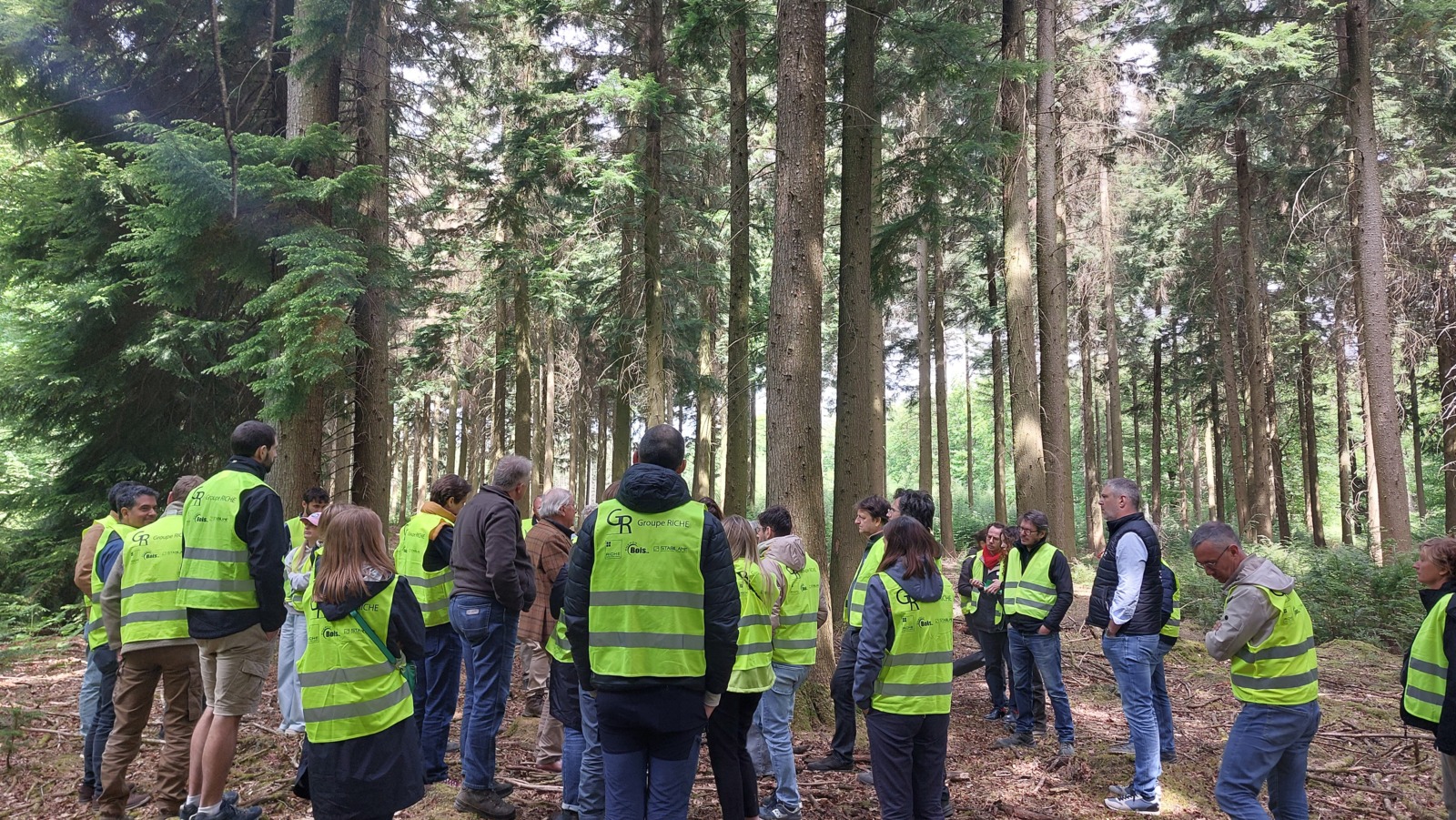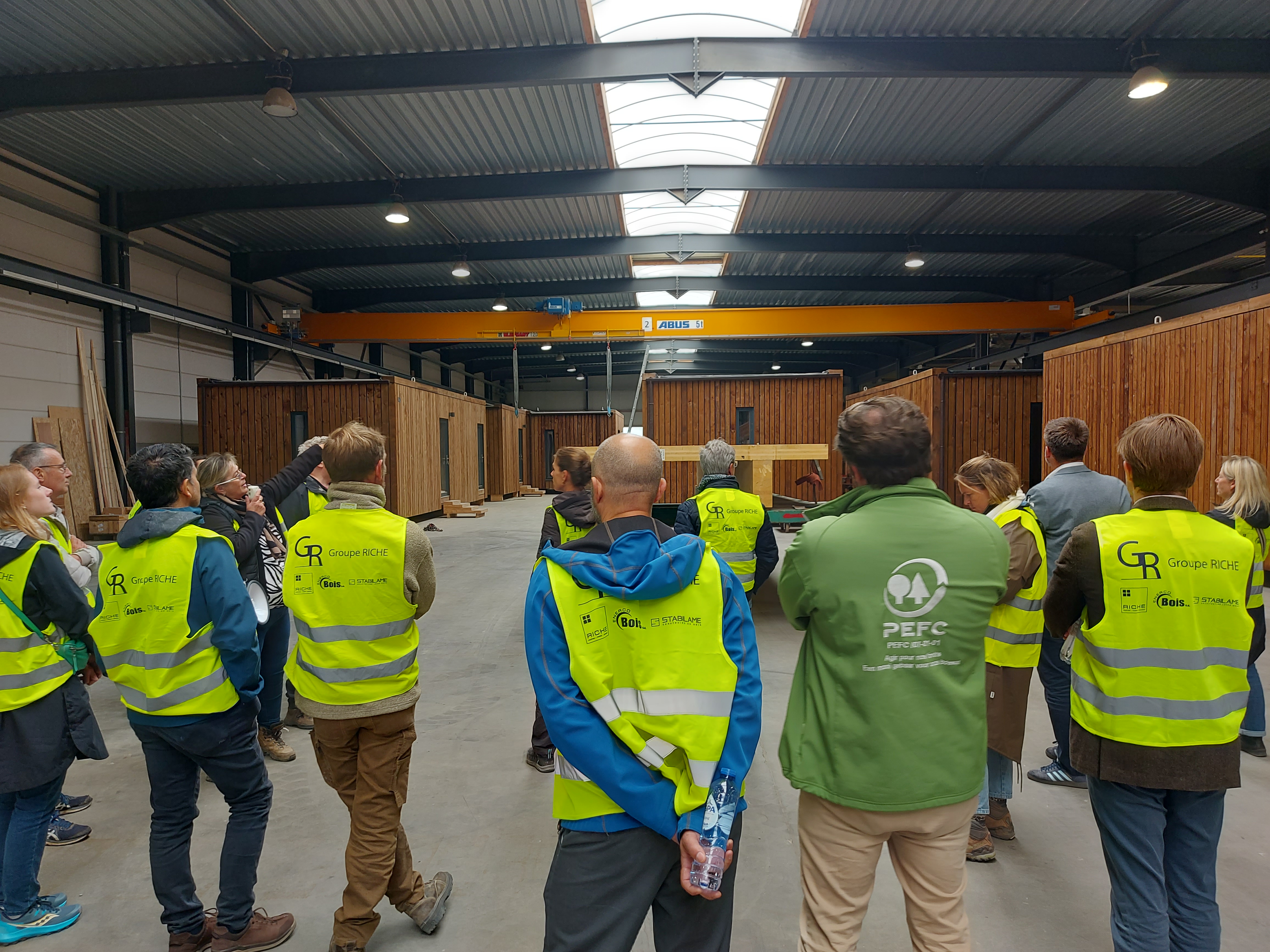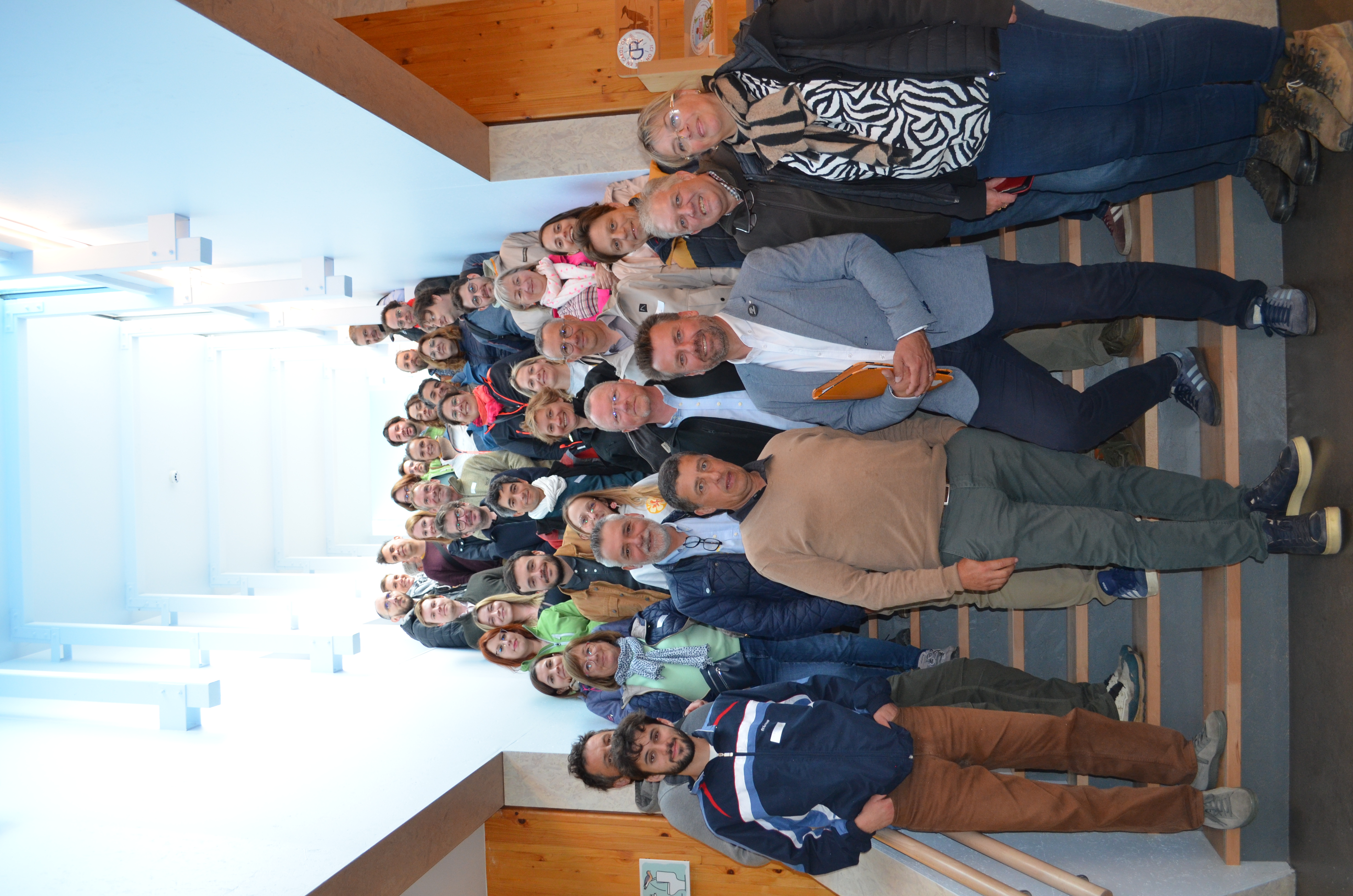An immersive day at the heart of Belgium’s wood industry
During the field trip, fifty built environment professionals explored a PEFC-certified timber supply chain - from forest to finished building.
An immersive day at the heart of Belgium’s wood industry
25 July 2025 Certification on the ground
In the Couvin region of Belgium, fifty built environment professionals participated in a field trip to explore a PEFC certified timber supply chain, from forest to final build.

Jointly organized by PEFC Belgium, ecobuild.brussels, Ligne Bois, and Stabilame, the event was designed to help architects, engineers, and project owners learn more about the advantages of a local, fully traceable, and sustainable wood industry.
Responsible forest management in action

The day kicked off with a visit to forest in the Couvin region, led by Yves de le Court, a PEFC-certified forest owner for many years.
He demonstrated what responsible forest management means: choosing suitable species, preserving biodiversity, appropriate thinning, planned reforestation and adapting forest management practices to take account of the effects of climate change, all crucial to maintain high quality wood production.
Such responsible forestry practices meet the requirements for PEFC forest certification, which balances ecosystem health with responsible timber production.
"Beyond responsible forest management criteria, PEFC certification helps secure market access for the future. I consider that ultimately, regulations will require certified materials, so our certification has enabled us to anticipate future developments," he explained.
Local, certified wood processing
The visit continued to PEFC chain of custody certificate holders Stabilame and Riche. Riche is a specialist carpentry company, while Stabilame specialises in the manufacture of CLT (cross-laminated timber).
Riche Carpentry Director, Bruno Riche and Stabilame’s CSR Manager Nathalie Lebrun demonstrated the companies’ integrated approach.
They source all their wood from PEFC-certified suppliers, with a preference for local species.
With its high level of automation, advanced prefabrication in the workshop and wood waste recovery, Stabilame is an exemplar of an innovative and sustainable business with strong local roots.
During the factory visit, the advantages of building with wood, including speed of build, inhabitant comfort, energy performance, reduced noise pollution on site, all while producing a lower carbon footprint, were explained.
Two green buildings: showcasing wood construction
For the second half of the day, led by architect Pierre Salingros, Atelier de Tromcourt, delegates visited two buildings showcasing wood construction:
- The Croix municipal school in Momignies: a 660 m² extension in CLT, designed with acoustic comfort, modularity in mind, which optimised the use of technical networks using 3D modelling.
- The Aquascope in Virelles: this was a renovation and extension of an iconic wooden building, incorporating a CLT staircase and custom-made wooden furniture, which were sympathetic to the existing structure and its environment. Participants were able to visit one of the modules. This was built with prefabricated wood, which enabled it to be assembled and installed on stilts, in just three days.
Salingros explained that the lightness, prefabrication, and traceability of certified wood make it a good fit for BIM (Building Information Modelling) and European DNSH (Do No Significant Harm) criteria, particularly in terms of reducing carbon footprint and environmental impact.
A local industry committed to the future
This well-received event highlighted the importance of wood as construction material, local expertise, and the need for a coordinated approach between forest management, processing, and construction.
The visits generated a great deal of interest from built environment professionals and enabled the wood industry to demonstrate how it can support the construction sector in carbon reduction.
